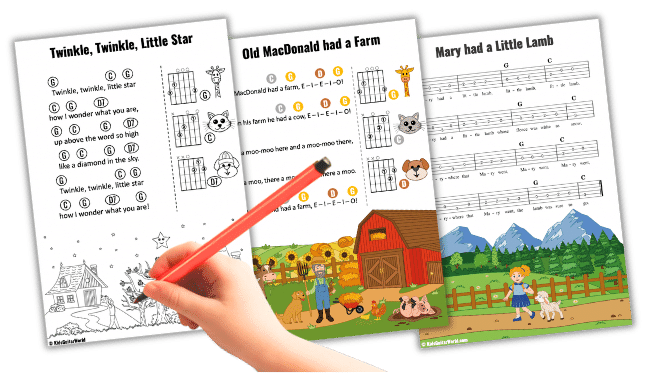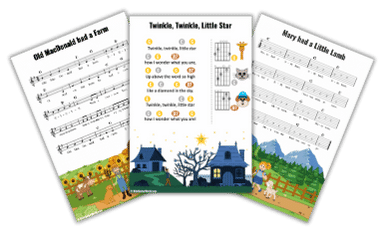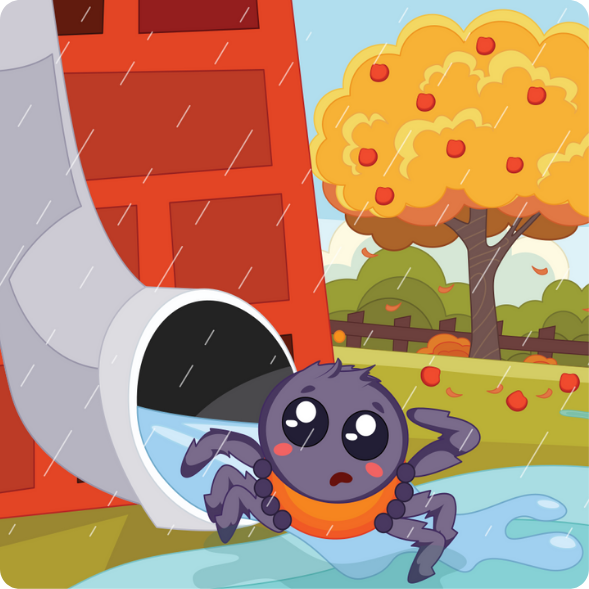
The nursery rhyme Itsy Bitsy Spider (also known as “The Incy Wincy Spider” in the UK, Australia and other English speaking countries) is a timeless children’s favorite that tells the story of a determined little spider who faces the challenges of the weather. As the Itsy Bitsy Spider climbs up a water spout, the rain washes him out, but soon the sun comes out and gives the spider another chance. In this free guitar lesson we will learn about the origin and history of this nursery rhyme and how to play it on the guitar. There are many different ways to play this song and we will start with a very simple version that requires only one string of your guitar! But we will also show you how to play Itsy Bitsy Spider with some basic guitar chords and provide you free PDF downloads like the sheet music for your practicing or lessons!
History and Origin of Itsy Bitsy Spider
Unfortunately, there are not many information about the origin and the author. It’s known that the song was first published in 1910 as an adult song in the US with the words “blooming, bloody” instead of “itsy bitsy”. It later appeared in other nursery rhyme publications with the words changed to “itsy bitsy” a more child-friendly alternative.
The repetitive and rhythmic nature of the song, combined with simple hand movements, makes it a popular choice for engaging young children and developing motor skills. With its enduring charm, Itsy Bitsy Spider has become a popular rhyme in early childhood education. Thanks to its simplicity the nursery rhyme is also a very good choice for guitar lessons with children.
Tabs for Itsy Bitsy Spider
There are many different ways to play a song, from simple to more advanced fingerstyle arrangements. Our main focus will be on simple arrangements, but we will also explore a variety of playing techniques. We’ll look at both fingerpicking and strumming. You will have the flexibility to choose the approach you prefer and learn that particular version. However, all versions are worth experimenting with and guitar teachers may find it beneficial to start with the easiest version and progress to more advanced renditions.
1. Level: Playing only on One Guitar String
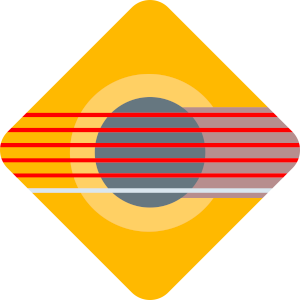
So, we start with the fingerpicking version. Since we find all the needed music notes for Itsy Bitsy Spider on one string, we start with this easy one string version of the song. This is a very good exercise for beginners since they have to focus only on picking one string and moving only one finger of the left hand up and down on this string. We also get more familiar with the notes of the string that we use. Push down the string with your index or middle finger of your left hand. Pluck the string with the thumb of your right hand.
Here are the tabs for Itsy Bitsy Spider on one string:
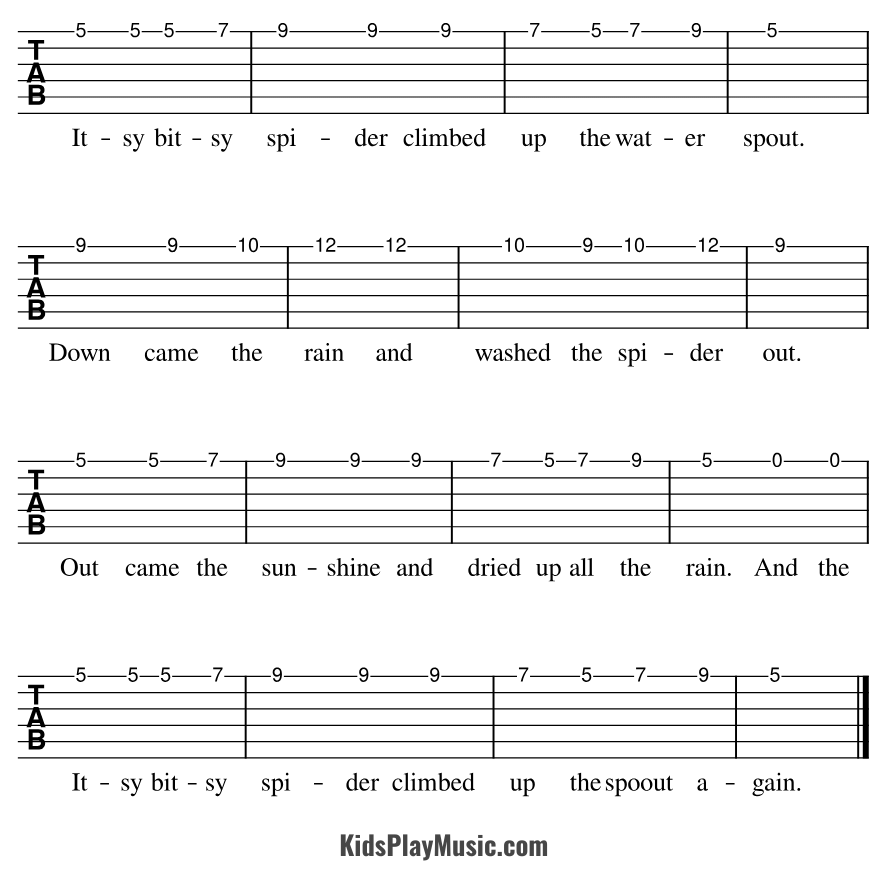
Below is a recording of how it should sound. You can play along and if it’s too fast, just slow it down.
You can actually play the same pattern on any other string as well. Try for example the 6th string (low E string) to have a pretty low version of the song.
2. Level: Playing on several Guitar Strings
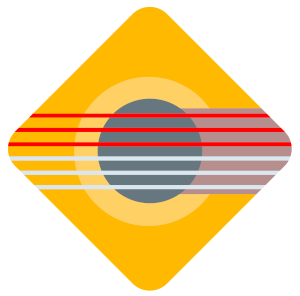
Do you master the melody on one string? Then let’s play the song now by using more than one string. This is much more common and efficient. You have probably noticed that we had to go up to the 12th fret to play the full melody. The advantage of using several strings is that you don’t have to move your left hand too much along the neck of the guitar. Of course, you now have to use several fingers and pluck different strings, but this is a very good exercise and you will get used to it!
Here are the tabs for playing the nursery rhyme on the first three strings:
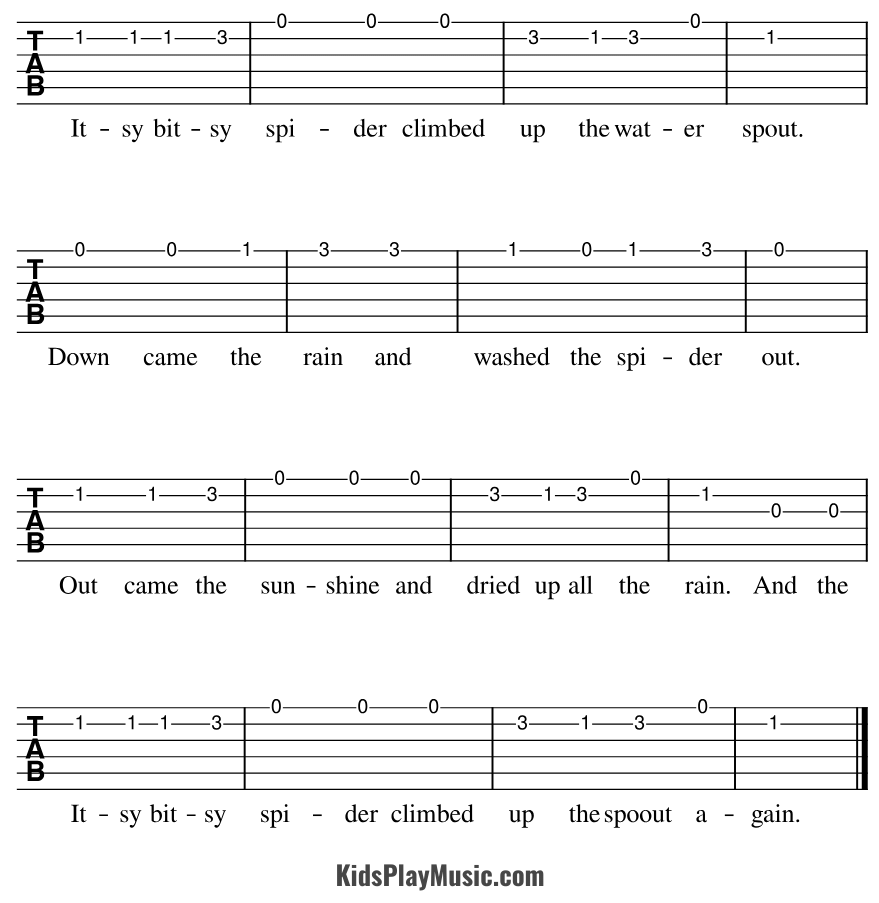
Again, you can listen to the recording to check your playing and see how it should sound.
Chords for Itsy Bitsy Spider
Fingerpicking is a good way to play the melody of a song but most of us also want to play a song by strumming. Let’s do it by using some simple chords. And for the song Itsy Bitsy Spider we only need two basic chords! Sure, there are different ways to play it but we start with an easy version. This means we are using basic guitar chords and the key of C, which is also easy to sing for most of the people.
The chords that you need for Mary had a little lamb are the chords C and G.
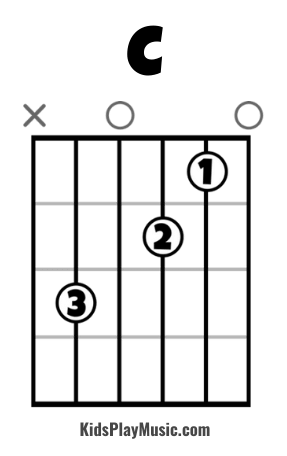
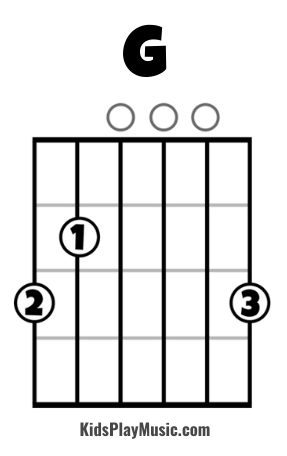
You already know how to play these chords and it’s not a big deal for you to change between C and G? Then, you are ready to play the song! If not, practice first the two chords individually and try to play the sequence -C-G with simple down strums.
If you are a beginner remember to start slowly. Do only a simple down strum on each chord change. This gives us enough time for changing between the chords without worrying too much about a strumming pattern and it also sounds good. Same applies when you want to sing along, just do one down strum on every chord change. It allows you to put the focus much more on the singing while practicing. Once you master the chord sequence and you know the song by heart, you can apply a strumming pattern.
The Citsy bitsy spider climbed Gup the waterCspout.
Down came the rain
and Gwashed the spider Cout.
Out came the sun
and Gdried up all the Crain
and the itsy bitsy spider climbed Gup the spout Cagain.
Sheet Music for Itsy Bitsy Spider
If you are not a beginner and you know how to play the guitar and understand music theory, then you probably know how to read sheet music as well! It provides you the most important of a piece of music, such as the pitch, rhythm and music notes. Even if you don’t know how to read sheet music or you want to teach it during your classes then easy nursery rhymes like Itsy Bitsy Spider are perfect exercise.
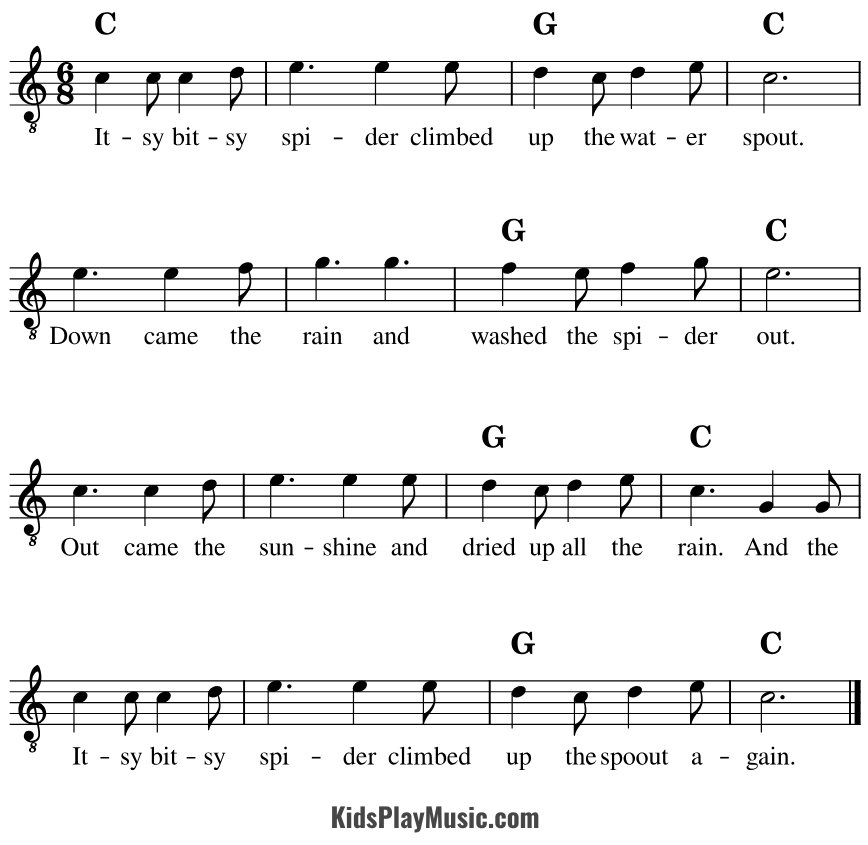
Free PDF Printables for Itsy Bitsy Spider
Feel free to download the chord version, guitar tabs and sheet music for free as a PDF in order to print it out as a worksheet for your guitar classes or just for practicing.
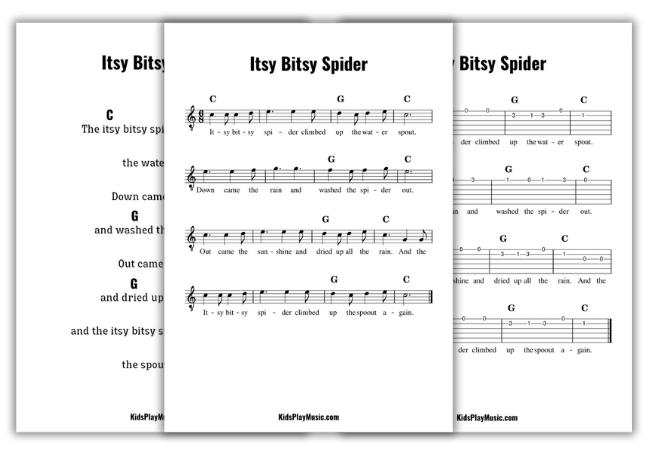
Interested in instruments other than the guitar? You can also find a free lesson on how to play Itsy Bitsy Spider on the piano.
